This wasn’t just any decade. It was the decade when smart industrial design spread beyond companies such as Apple and Ideo to the makers of everyday things. It was also a decade of technological innovation, combined with thinking that favored simplicity and making devices more accessible to the broader population. Instead of just hardware, the best companies focused on creating a complete user experience, from hardware to software to user interfaces.
We’ve put together a shortlist below of what we consider the most innovative devices to appear from 2000 to 2009. They’re in random order.
Help us pick the overall winner by voting for just one of the contenders. And we’d love to hear about why you picked what you did in the comments section.
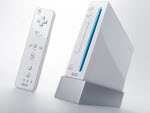 The Nintendo Wii broadened the market for video games beyond hardcore gamers to include everyone from toddlers to the elderly. While the console rivals got into an arms race on graphics, Nintendo thought differently and focused on a new user interface with the motion-sensing Wii remote. It made playing games in the living room a fun-filled and social experience again. (2006).
The Nintendo Wii broadened the market for video games beyond hardcore gamers to include everyone from toddlers to the elderly. While the console rivals got into an arms race on graphics, Nintendo thought differently and focused on a new user interface with the motion-sensing Wii remote. It made playing games in the living room a fun-filled and social experience again. (2006).
 The Apple iPod proved that people were willing to pay for music, thanks to a well-designed iTunes store, an elegant and simple device, and a broad selection of music. It wasn’t the first music player, but it was the first one that sold like hot cakes and it introduced a new era of digital music, movies and videos. (2001)
The Apple iPod proved that people were willing to pay for music, thanks to a well-designed iTunes store, an elegant and simple device, and a broad selection of music. It wasn’t the first music player, but it was the first one that sold like hot cakes and it introduced a new era of digital music, movies and videos. (2001)
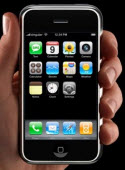 The Apple iPhone liberated users from carrier-chosen applications with the AppStore, doing for mobile apps what the iPod did for music. Apple has sold nearly 60 million iPhones and iPod Touch models. And there are more than 119,000 apps in the AppStore. (2007).
The Apple iPhone liberated users from carrier-chosen applications with the AppStore, doing for mobile apps what the iPod did for music. Apple has sold nearly 60 million iPhones and iPod Touch models. And there are more than 119,000 apps in the AppStore. (2007).
Flat-panel TVs have fallen in price from $5,000 to as little as $500 in the past decade. They make everything from games to 1080p movies look vibrant and immersive in your living room. The competition between LCD and plasma vendors helped drive prices down and led to mass adoption.
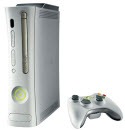 Microsoft’s Xbox 360 started the next-generation of video games. The company’s Xbox console introduced in 2001 made the console market competitive again. And it expanded the notion of the game console as a gateway to living room entertainment, providing everything from online games to Netflix movies. Microsoft shot itself in the foot with quality problems, but its Xbox Live online gaming service is going strong with more than 20 million members. (2005).
Microsoft’s Xbox 360 started the next-generation of video games. The company’s Xbox console introduced in 2001 made the console market competitive again. And it expanded the notion of the game console as a gateway to living room entertainment, providing everything from online games to Netflix movies. Microsoft shot itself in the foot with quality problems, but its Xbox Live online gaming service is going strong with more than 20 million members. (2005).
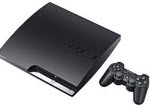 Sony’s PlayStation 3 has incredible processing power that still hasn’t been fully exploited in games. And it helped cement Blu-ray as the winner in next-generation movie players. The console started out pricey at $599, costing Sony a lot of lost customers. But it has been reliable and now features some of the best games ever created, such as Uncharted 2: Among Thieves. (2006).
Sony’s PlayStation 3 has incredible processing power that still hasn’t been fully exploited in games. And it helped cement Blu-ray as the winner in next-generation movie players. The console started out pricey at $599, costing Sony a lot of lost customers. But it has been reliable and now features some of the best games ever created, such as Uncharted 2: Among Thieves. (2006).
GPS navigation has saved all of us from getting lost, except for the couple that drove into a lake using GPS. Cars are now coming with built-in navigation systems, and they’re adding new features, as with Ford Sync’s voice-recognition for safe dialing. (2000).
 The Amazon Kindle is still proving itself in the market. But it broke new ground as the first successful electronic book reader on the market. You can use it to browse a huge library and download books almost instantaneously through its wireless networking. (2001).
The Amazon Kindle is still proving itself in the market. But it broke new ground as the first successful electronic book reader on the market. You can use it to browse a huge library and download books almost instantaneously through its wireless networking. (2001).
 Research in Motion’s BlackBerry phones have been nicknamed CrackBerrys as they enable email addicts to get their fix anytime, anywhere. Various models, including those with the pearl-like track ball, have made it easy to send emails with just one hand. (2002).
Research in Motion’s BlackBerry phones have been nicknamed CrackBerrys as they enable email addicts to get their fix anytime, anywhere. Various models, including those with the pearl-like track ball, have made it easy to send emails with just one hand. (2002).
Nintendo’s DS handheld gaming device and its DSi successor have sold more than 110 million units worldwide. With games such as Nintendogs and Animal Crossing, they have broadened the market for video games in the portable space. Since the original was introduced in 2004, Nintendo has kept improving the design, launching the DS Lite in 2006 and the DSi in 2009.
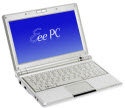 The Asus Eee PC wasn’t exactly the most functional computer. But it broke through a price barrier and inaugurated the whole category of netbooks, which are smaller than laptops and are meant for viewing the web. Now netbooks are a huge growing category in the PC business. (2007).
The Asus Eee PC wasn’t exactly the most functional computer. But it broke through a price barrier and inaugurated the whole category of netbooks, which are smaller than laptops and are meant for viewing the web. Now netbooks are a huge growing category in the PC business. (2007).
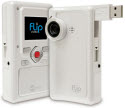 Flip Video camcorders arrived just in time for the YouTube era. They made it simple to shoot video, upload it to a computer, and then to the video sharing site of your choice. Started by Pure Digital, it’s now owned by Cisco. (2006).
Flip Video camcorders arrived just in time for the YouTube era. They made it simple to shoot video, upload it to a computer, and then to the video sharing site of your choice. Started by Pure Digital, it’s now owned by Cisco. (2006).
Satellite radio has freed people from listening to a dull selection of AM/FM radio stations. Now you can get everything from Howard Stern to CNN on the radio. It’s too bad the only choice is Sirius XM radio. (2004).
 Slingbox was a clever creation that let people take their recorded shows and watch them on a laptop while traveling. It helped us move further along the path of getting our content anytime, anywhere. It introduced the concept of “place shifting” so that you never had to miss a show. (2005).
Slingbox was a clever creation that let people take their recorded shows and watch them on a laptop while traveling. It helped us move further along the path of getting our content anytime, anywhere. It introduced the concept of “place shifting” so that you never had to miss a show. (2005).
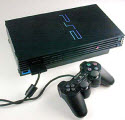 Sony’s PlayStation 2 has sold more than 150 million units worldwide and remains the top-selling game console of all time. A full 109 months after its introduction in the U.S., the console still sells hundreds of thousands of units a month. (2000).
Sony’s PlayStation 2 has sold more than 150 million units worldwide and remains the top-selling game console of all time. A full 109 months after its introduction in the U.S., the console still sells hundreds of thousands of units a month. (2000).
 Universal serial bus flash drives can now store 256 gigabytes of data. OK, maybe they’re boring. When they were introduced in 2000 by IBM and Trek Technology, they could hold a scant eight megabytes. They can also install programs, making it much easier to launch new software that would otherwise be pretty complicated.
Universal serial bus flash drives can now store 256 gigabytes of data. OK, maybe they’re boring. When they were introduced in 2000 by IBM and Trek Technology, they could hold a scant eight megabytes. They can also install programs, making it much easier to launch new software that would otherwise be pretty complicated.

